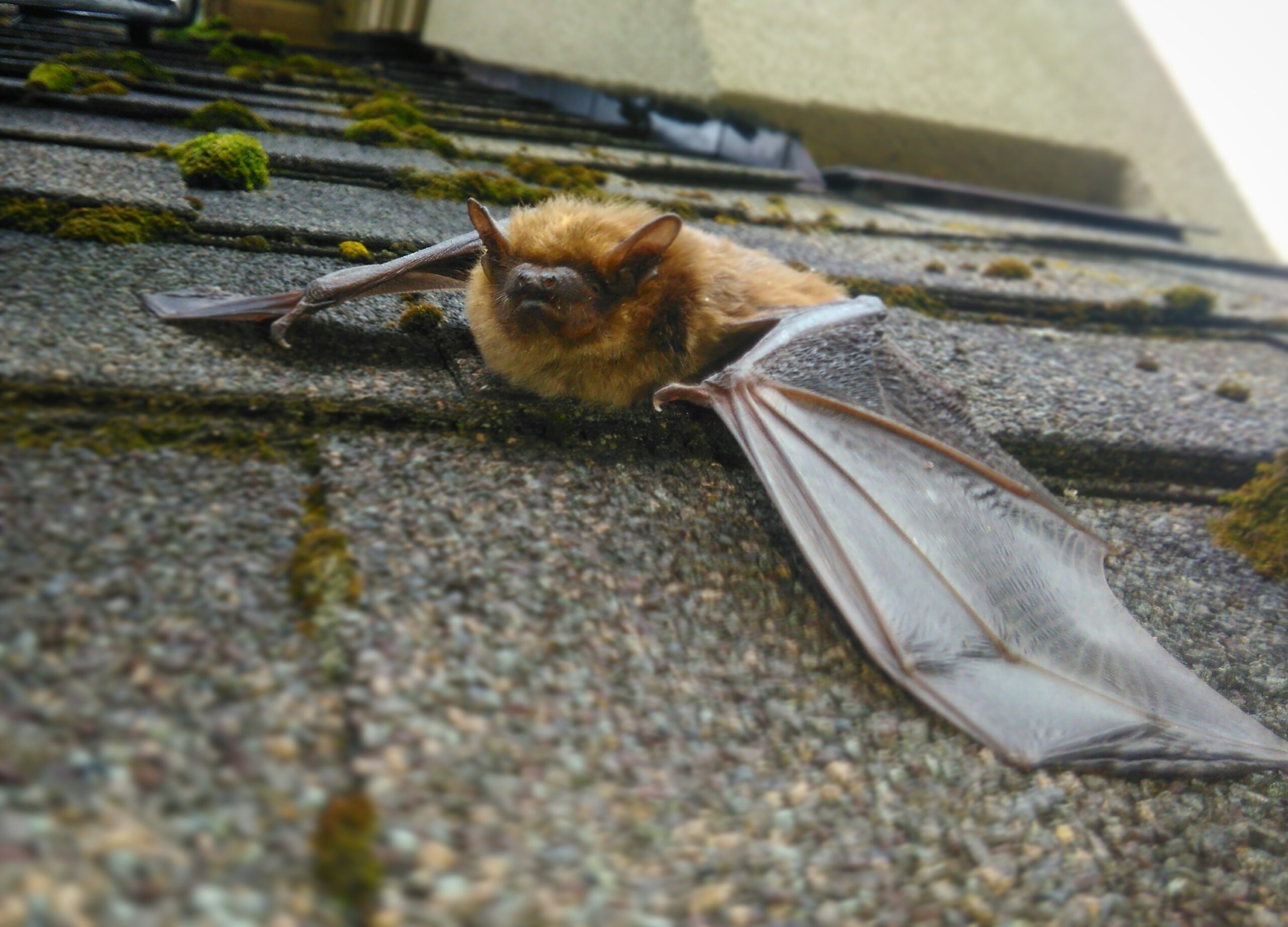Bats and Their Habits
Bats are small, warm-blooded, mammals with the unique ability to fly. They use echolocation to find small insects and can eat up to three times their body weight in a single night. Bats can roost in caves and cliffs, but very often form colonies in homes and buildings. Bats are most active after dusk and can spend hours each night in search of food and a safe roosting location.Bats hibernate during the winter and usually produce one pup per season, nursing it for up to five weeks before encouraging it to leave the roost and hunt independently. A pregnant bat may find its way into your home and enjoy the consistent temperatures offered by walls and attics. Over time, other bats from the same colony may join her and increase the number of bats living in your home.
What Attracts Bats To Your Property?
Like most mammals that enter human homes, bats roost in places that offer ample food and water sources, as well as protection from bad weather and predators. This is especially important for bats carrying young, as both mothers and pups are more vulnerable during this time.Bats in Milwaukee thrive on insects and may discover your property if you have flowers and trees that attract moths and other flying insects, including:
- Wasps
- Mosquitos
- Winged beetles
- Mayflies
How Do Bats Get Into the House?
Unlike rodents, bats do not gnaw and chew their way into a home. Instead, they usually find their way in through small gaps and broken soffits on the roof. They may also get in through your home's chimney if the opening's screen is damaged. Sometimes bats find gaps that lead them behind your home's walls and may roost in voids they find there. This can result in damage to your home's insulation and wiring.How Do You Find Evidence of Bats in the House?
Once bats enter your home, you will likely find them in your attic or an upper floor with high ceilings. Bat guano, or feces, has a powerful odor you may notice before seeing a live bat. Unusual sounds in the attic at night, such as scratching and squeaking, may also alert you to the presence of bats in your home. If you live in a home with a vacant attic or unused rooms, bats may take advantage of these spaces as well.Are Bats Dangerous?
While bats do keep insect populations around Milwaukee under control and do not attack people unprovoked, having them inside your home introduces several dangers to you and your family. Once inside a home, bats can create costly damage to insulation with the droppings they leave behind. Levels of contamination depend primarily on the size of the colony and the length of time they have occupied the home. Bat droppings inside attics can pose a health risk to humans if disturbed. Without the proper protective equipment, removing bat droppings can lead to bacterial infections and further contamination.While you can find information about how to get rid of bats in your house on your own, handling these creatures without any experience can result in serious scratches and bites that may become infected. Mother bats will defend their pups at the risk of their own lives, so calling in Skedaddle's wildlife technicians for bat control in Milwaukee instead of trying to remove bats yourself can prevent wild animal injuries.
We Know How To Get Rid of Bats in Milwaukee
Because bats hibernate in the winter and then raise their young during the spring, timing can have an effect on effective bat removal. Our knowledgeable wildlife removal technicians have a great understanding of these creatures and work to remove them from your home in ways that do not harm adults or their pups.Identifying all the small cracks, gaps, and holes along the roof that bats use to get inside can be difficult without a trained eye. Accessing rooftops to find these entries can be dangerous, but our Skedaddle technicians are certified in roof and ladder safety to reach the high points of your home and complete the tedious process of sealing every entry point. Doing so on your own, especially without training or the proper safety equipment, could result in a serious fall.
One way our technicians confirm the presence of a bat colony inside your home is a thorough attic inspection. While it is rare to see bats themselves, as they generally prefer to rest in little nooks and crannies, they do leave droppings everywhere they go. Skedaddle technicians have the experience and training to find and recognize bat droppings that give away the presence of a colony.
Our Process for Bat Removal in Milwaukee
Skedaddle Humane Wildlife Control’s Wildlife technicians are trained to identify bat entry points, as Milwaukee species can fit through a hole the size of a dime. Our techs then locate the bat colony and determine the phase of the breeding cycle.Our technicians will then walk you through each step of the process as they complete a 35-50 point inspection of your property and identify all signs of wildlife. To ensure a humane and economical removal within the boundaries of the law our strategy involves removing the entire bat colony from your home while avoiding any actions that may harm them.
We Can Assist With Bat Prevention
Once our technicians remove all the live bats from your home and complete the cleanup process, they can walk you through some steps that can prevent these creatures from re-entering your home the following breeding season. Removing water sources from your property can help discourage bats from roosting nearby. Our technicians can also assist with bat-proofing the upper levels and roof of your home, sealing entrances that bats might use, including:- Siding gaps
- Window gaps
- Small window screen tears



